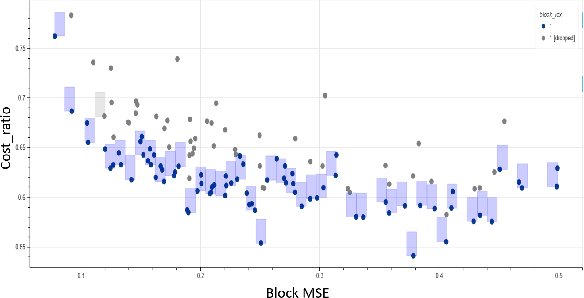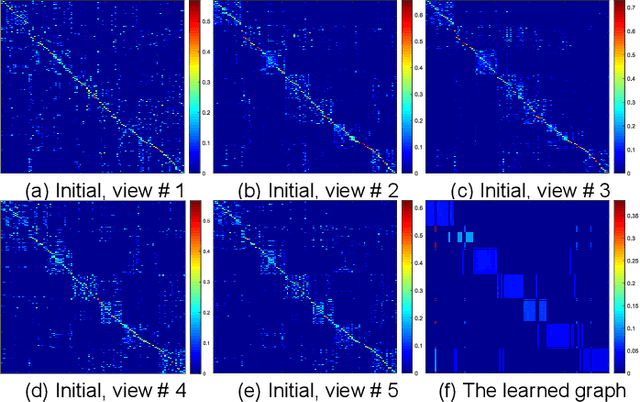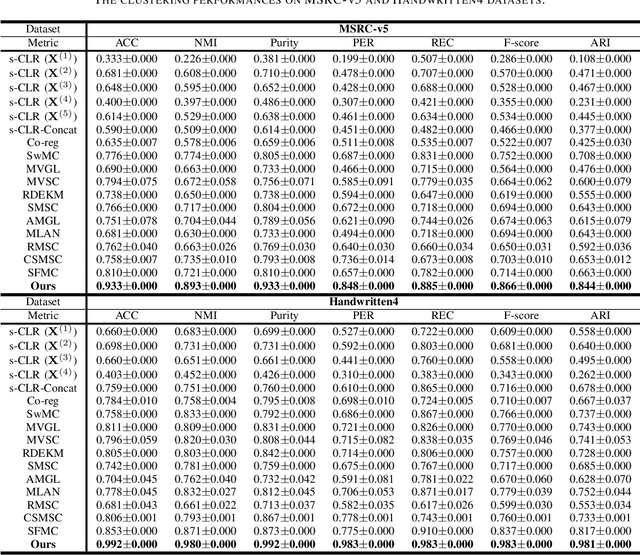Tianyu Jiang
Evaluating the Impact of Verbal Multiword Expressions on Machine Translation
Aug 24, 2025Abstract:Verbal multiword expressions (VMWEs) present significant challenges for natural language processing due to their complex and often non-compositional nature. While machine translation models have seen significant improvement with the advent of language models in recent years, accurately translating these complex linguistic structures remains an open problem. In this study, we analyze the impact of three VMWE categories -- verbal idioms, verb-particle constructions, and light verb constructions -- on machine translation quality from English to multiple languages. Using both established multiword expression datasets and sentences containing these language phenomena extracted from machine translation datasets, we evaluate how state-of-the-art translation systems handle these expressions. Our experimental results consistently show that VMWEs negatively affect translation quality. We also propose an LLM-based paraphrasing approach that replaces these expressions with their literal counterparts, demonstrating significant improvement in translation quality for verbal idioms and verb-particle constructions.
Towards Robust Evaluation of Visual Activity Recognition: Resolving Verb Ambiguity with Sense Clustering
Aug 07, 2025Abstract:Evaluating visual activity recognition systems is challenging due to inherent ambiguities in verb semantics and image interpretation. When describing actions in images, synonymous verbs can refer to the same event (e.g., brushing vs. grooming), while different perspectives can lead to equally valid but distinct verb choices (e.g., piloting vs. operating). Standard exact-match evaluation, which relies on a single gold answer, fails to capture these ambiguities, resulting in an incomplete assessment of model performance. To address this, we propose a vision-language clustering framework that constructs verb sense clusters, providing a more robust evaluation. Our analysis of the imSitu dataset shows that each image maps to an average of 2.8 sense clusters, with each cluster representing a distinct perspective of the image. We evaluate multiple activity recognition models and compare our cluster-based evaluation with standard evaluation methods. Additionally, our human alignment analysis suggests that the cluster-based evaluation better aligns with human judgements, offering a more nuanced assessment of model performance.
ConMeC: A Dataset for Metonymy Resolution with Common Nouns
Feb 10, 2025



Abstract:Metonymy plays an important role in our daily communication. People naturally think about things using their most salient properties or commonly related concepts. For example, by saying "The bus decided to skip our stop today," we actually mean that the bus driver made the decision, not the bus. Prior work on metonymy resolution has mainly focused on named entities. However, metonymy involving common nouns (such as desk, baby, and school) is also a frequent and challenging phenomenon. We argue that NLP systems should be capable of identifying the metonymic use of common nouns in context. We create a new metonymy dataset ConMeC, which consists of 6,000 sentences, where each sentence is paired with a target common noun and annotated by humans to indicate whether that common noun is used metonymically or not in that context. We also introduce a chain-of-thought based prompting method for detecting metonymy using large language models (LLMs). We evaluate our LLM-based pipeline, as well as a supervised BERT model on our dataset and three other metonymy datasets. Our experimental results demonstrate that LLMs could achieve performance comparable to the supervised BERT model on well-defined metonymy categories, while still struggling with instances requiring nuanced semantic understanding. Our dataset is publicly available at: https://github.com/SaptGhosh/ConMeC.
DONNAv2 -- Lightweight Neural Architecture Search for Vision tasks
Sep 26, 2023



Abstract:With the growing demand for vision applications and deployment across edge devices, the development of hardware-friendly architectures that maintain performance during device deployment becomes crucial. Neural architecture search (NAS) techniques explore various approaches to discover efficient architectures for diverse learning tasks in a computationally efficient manner. In this paper, we present the next-generation neural architecture design for computationally efficient neural architecture distillation - DONNAv2 . Conventional NAS algorithms rely on a computationally extensive stage where an accuracy predictor is learned to estimate model performance within search space. This building of accuracy predictors helps them predict the performance of models that are not being finetuned. Here, we have developed an elegant approach to eliminate building the accuracy predictor and extend DONNA to a computationally efficient setting. The loss metric of individual blocks forming the network serves as the surrogate performance measure for the sampled models in the NAS search stage. To validate the performance of DONNAv2 we have performed extensive experiments involving a range of diverse vision tasks including classification, object detection, image denoising, super-resolution, and panoptic perception network (YOLOP). The hardware-in-the-loop experiments were carried out using the Samsung Galaxy S10 mobile platform. Notably, DONNAv2 reduces the computational cost of DONNA by 10x for the larger datasets. Furthermore, to improve the quality of NAS search space, DONNAv2 leverages a block knowledge distillation filter to remove blocks with high inference costs.
Classifying Organizations for Food System Ontologies using Natural Language Processing
Sep 19, 2023Abstract:Our research explores the use of natural language processing (NLP) methods to automatically classify entities for the purpose of knowledge graph population and integration with food system ontologies. We have created NLP models that can automatically classify organizations with respect to categories associated with environmental issues as well as Standard Industrial Classification (SIC) codes, which are used by the U.S. government to characterize business activities. As input, the NLP models are provided with text snippets retrieved by the Google search engine for each organization, which serves as a textual description of the organization that is used for learning. Our experimental results show that NLP models can achieve reasonably good performance for these two classification tasks, and they rely on a general framework that could be applied to many other classification problems as well. We believe that NLP models represent a promising approach for automatically harvesting information to populate knowledge graphs and aligning the information with existing ontologies through shared categories and concepts.
Multiple Graph Learning for Scalable Multi-view Clustering
Jun 29, 2021



Abstract:Graph-based multi-view clustering has become an active topic due to the efficiency in characterizing both the complex structure and relationship between multimedia data. However, existing methods have the following shortcomings: (1) They are inefficient or even fail for graph learning in large scale due to the graph construction and eigen-decomposition. (2) They cannot well exploit both the complementary information and spatial structure embedded in graphs of different views. To well exploit complementary information and tackle the scalability issue plaguing graph-based multi-view clustering, we propose an efficient multiple graph learning model via a small number of anchor points and tensor Schatten p-norm minimization. Specifically, we construct a hidden and tractable large graph by anchor graph for each view and well exploit complementary information embedded in anchor graphs of different views by tensor Schatten p-norm regularizer. Finally, we develop an efficient algorithm, which scales linearly with the data size, to solve our proposed model. Extensive experimental results on several datasets indicate that our proposed method outperforms some state-of-the-art multi-view clustering algorithms.
 Add to Chrome
Add to Chrome Add to Firefox
Add to Firefox Add to Edge
Add to Edge